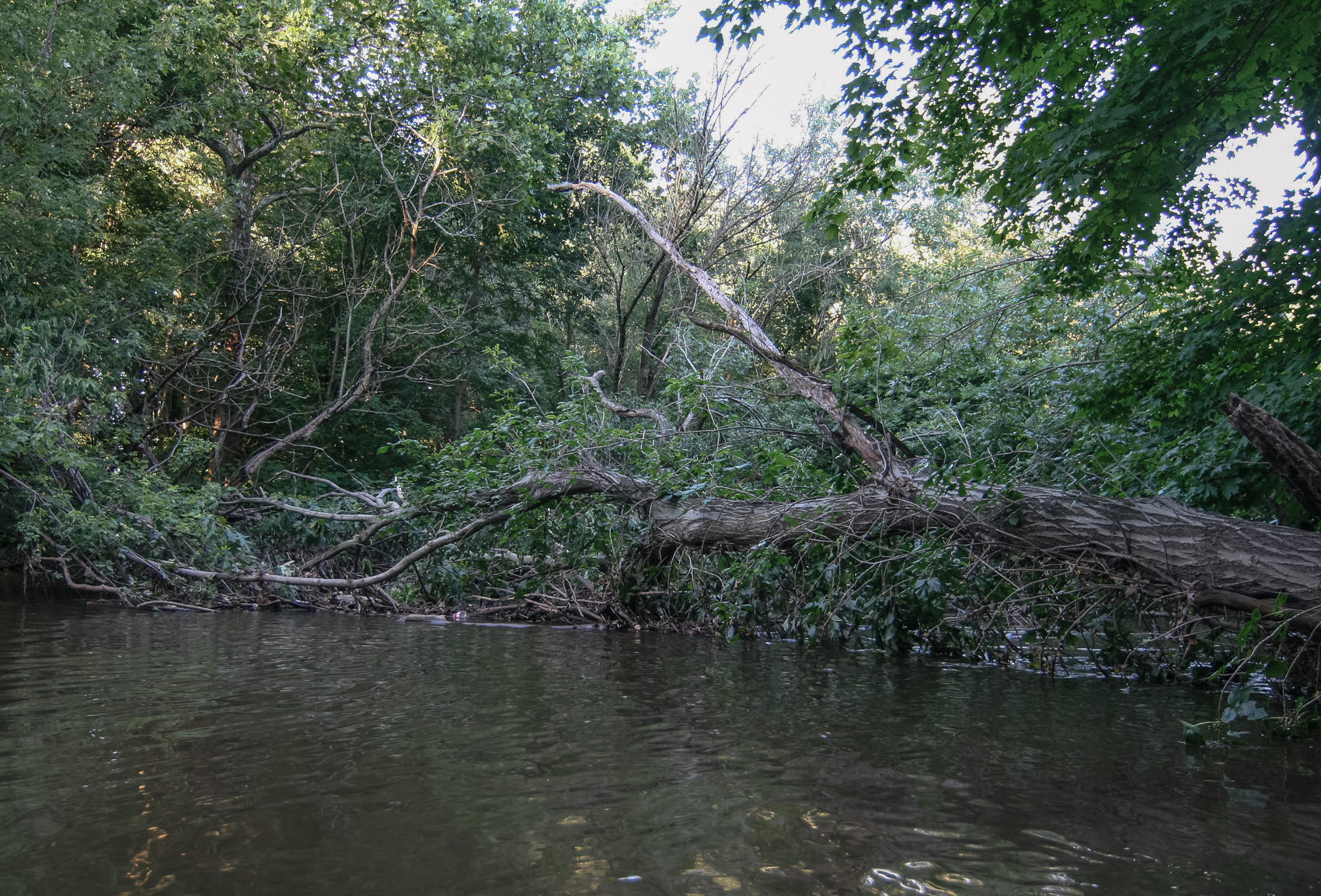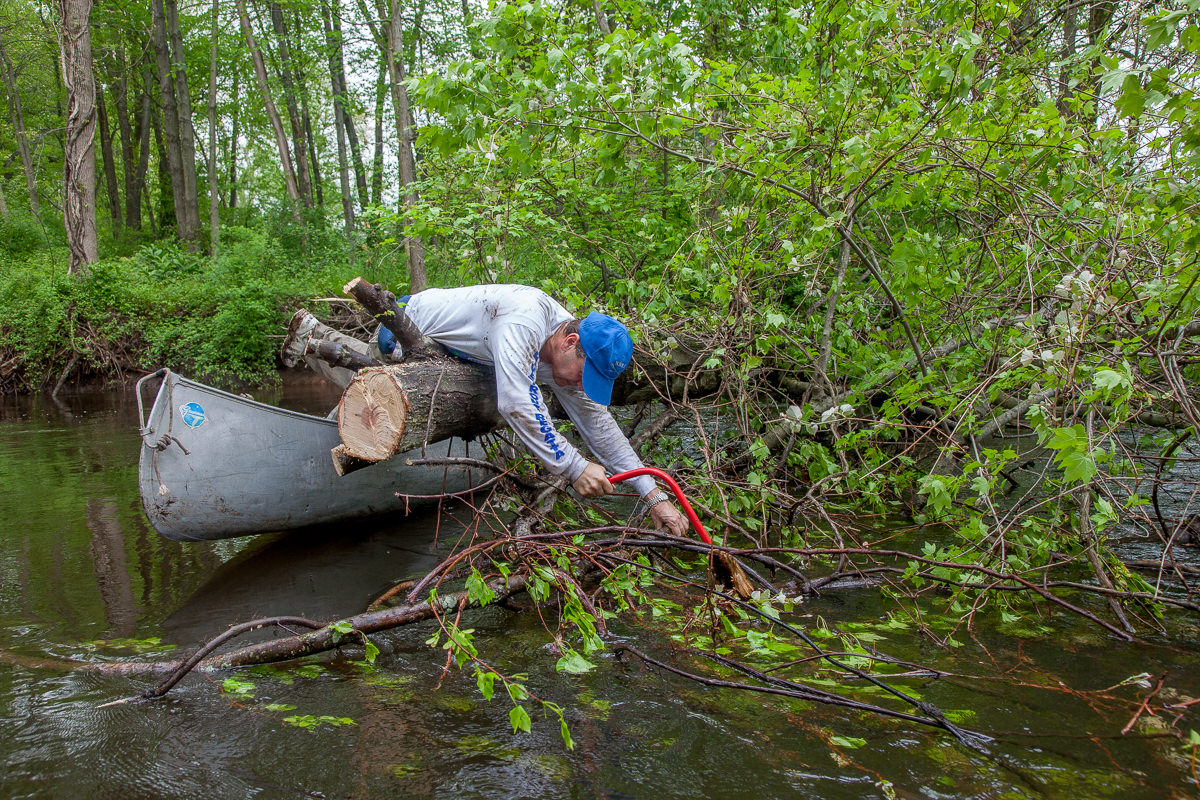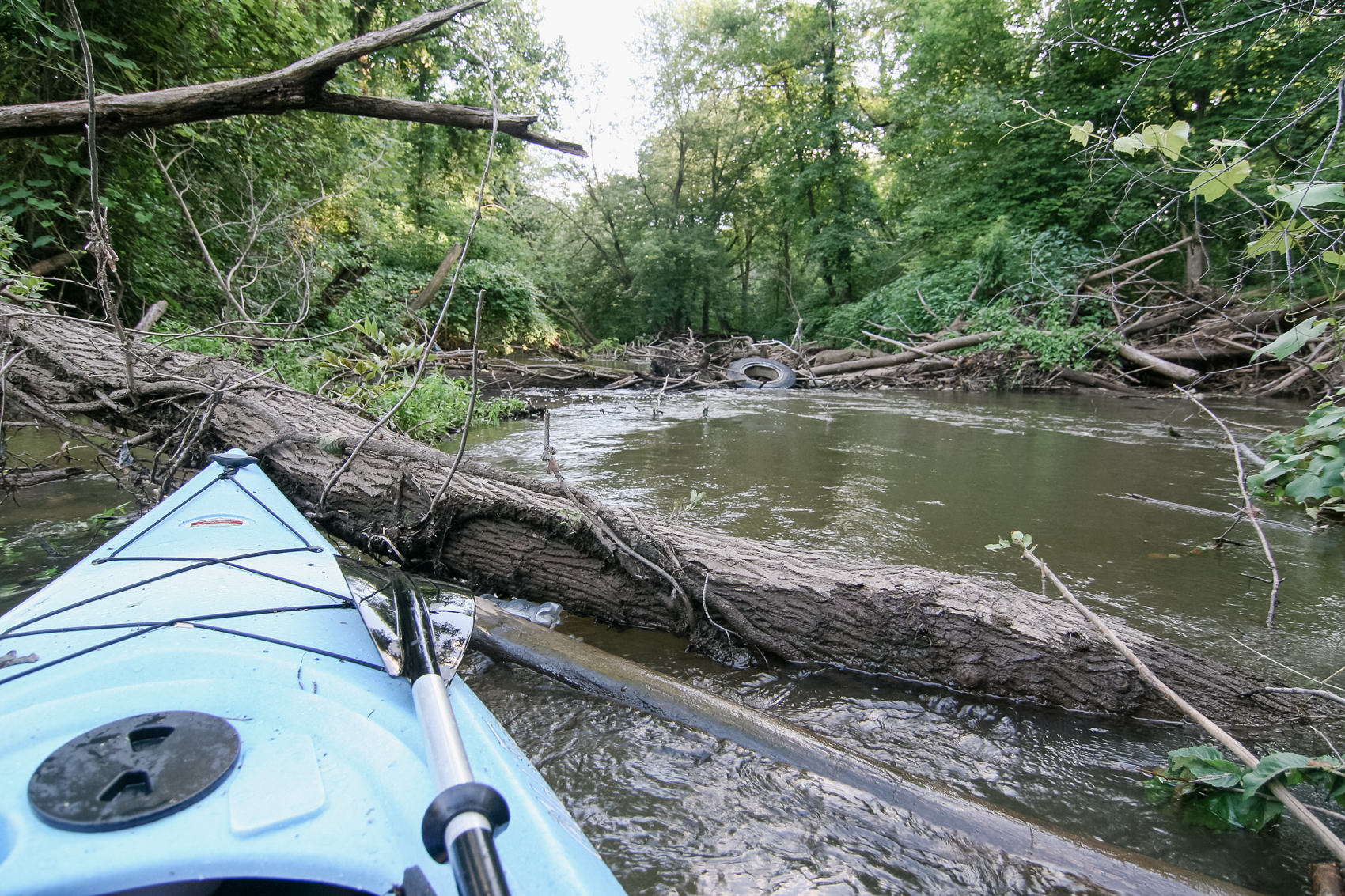If a tree falls in the river…
If you’re keen to explore the upper passages of the Quinnipiac River by canoe or kayak, be prepared to duck, climb and carry. Downed trees and woody debris form frequent obstacles, requiring clever craft maneuvering or an occasional short portage. The Quinnipiac River Fund estimates that 30 – 40 newly fallen trees impact the river each year. That’s a significant nuisance for boat navigation, so why not remove them?
While they may be inconvenient, the most eco-sensitive solution is not to extract them, the Fund explains, but rather address the root of the problem, which happens to involve the roots. Trees along the Quinnipiac are uprooted more often than those along less-developed waterways due to the high-levels of impervious cover in Quinnipiac’s watershed. Hard surfaces — such as driveways, roads and parking lots — carry stormwater at greater amounts and velocities than natural surfaces, leading to increased bank erosion and more frequent tree falls.
To help mitigate the erosion, the Fund supports efforts aimed at educating landowners and municipalities on the importance of low-impact development, including encouraging towns to require vegetative buffers — strips of land with permanent vegetation designed to intercept rapid stormwater runoff.
In the meantime, the USDA Natural Resources Conservation Services and Connecticut Department of Environmental Protection suggest that most wood and downed trees should be allowed to remain in the river, as they help reduce the erosion problem by dissipating energy and stabilizing the banks. Likewise, DEP fisheries say that fallen trees provide important habitat for fish and wildlife.
Although removal of the downed trees is discouraged, minimal clearing and cutting is permissible, and often critical, to provide safe passage for water activities. Organizations like the Quinnipiac River Watershed Association organize clean-up activities and train volunteers to address the fallen trees in a manner sensitive to both environment and recreational access.
So when you encounter a maze of trunks and branches on your next Quinnipiac adventure, remember the river’s many challenges, and let the inconvenience propel you to action for a healthier Quinnipiac. Visit our conservation page to see how simple household actions — from lawn care to composting — can make a difference.



